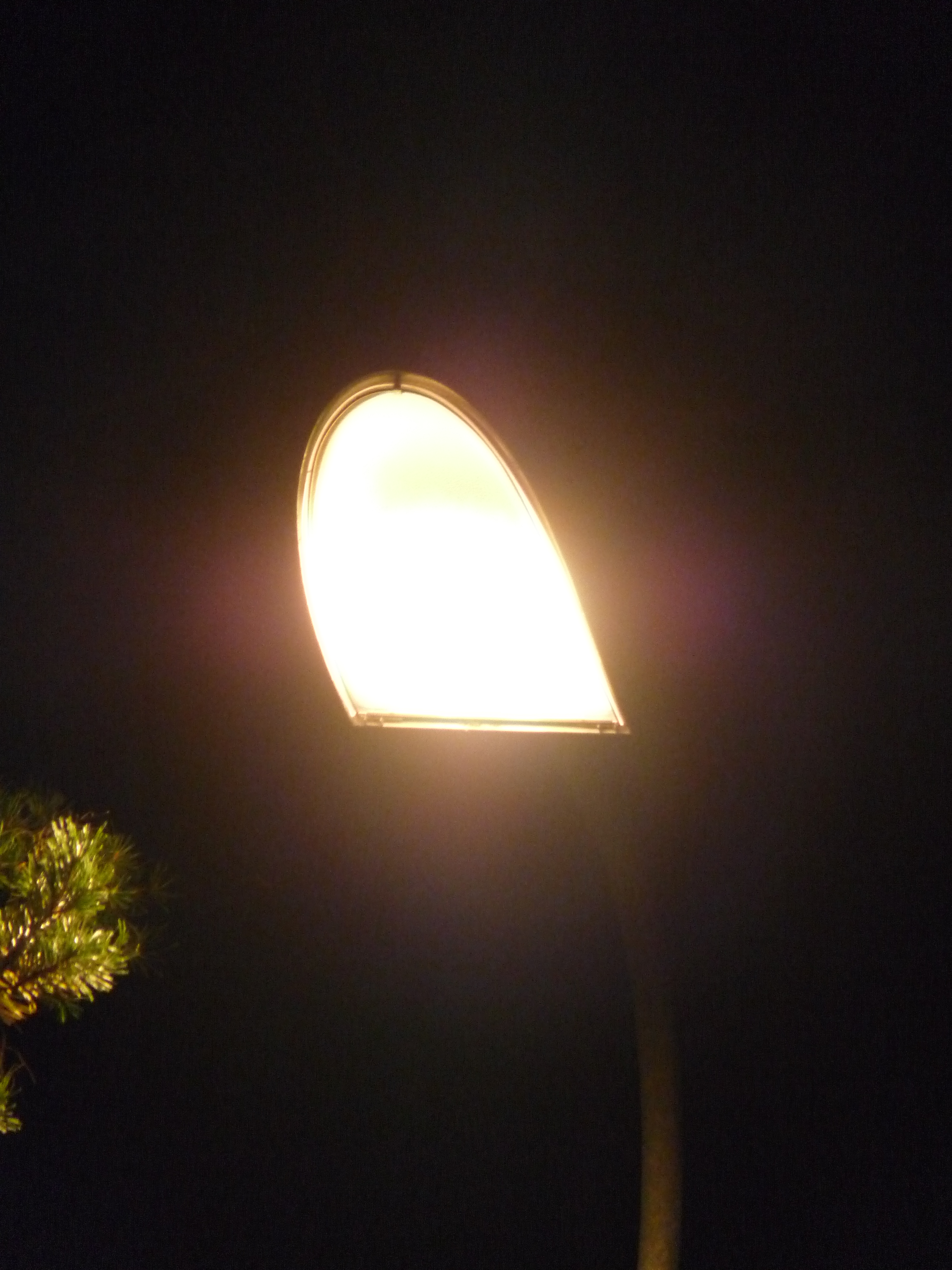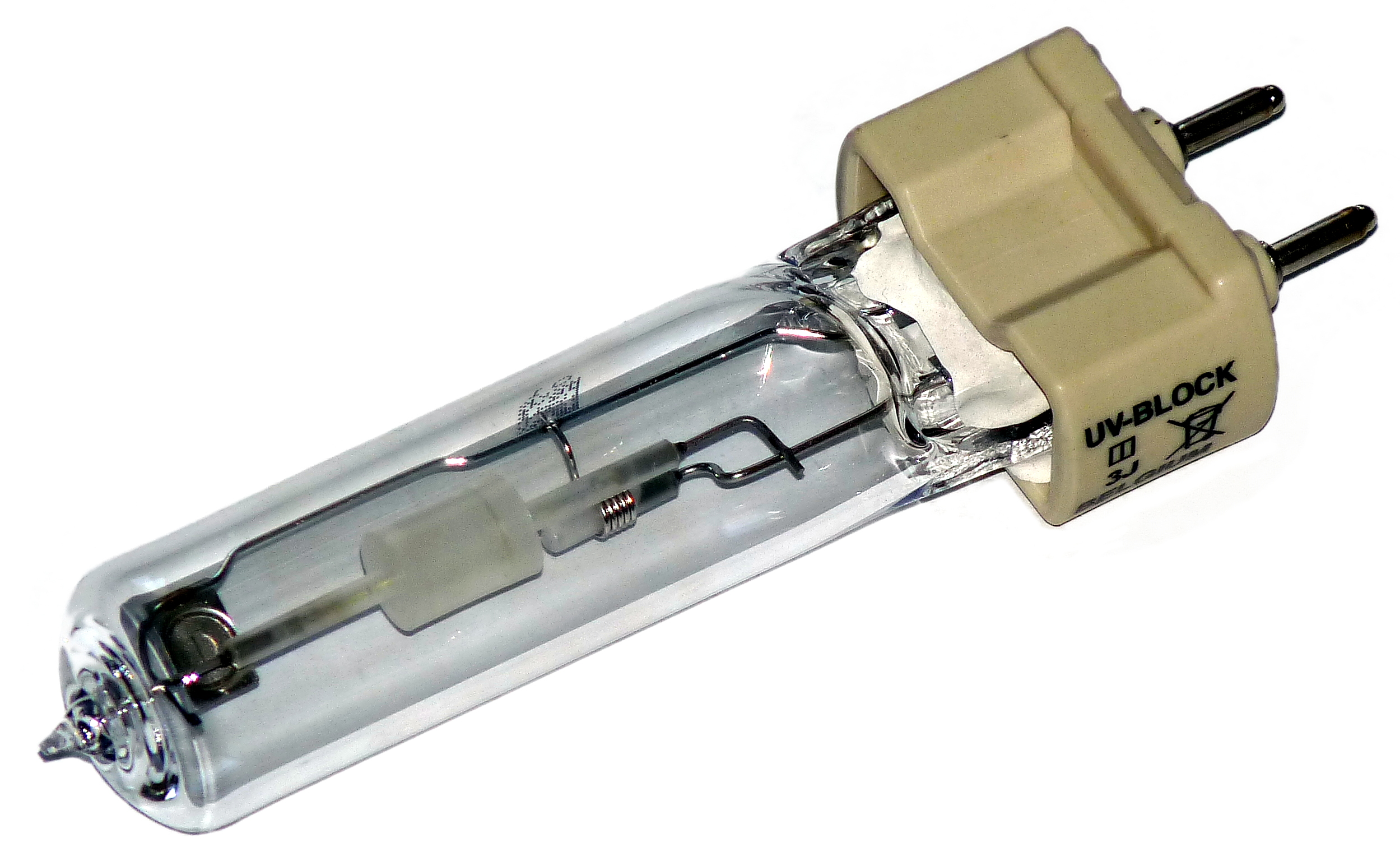Ceramic discharge metal halide lamp on:
[Wikipedia]
[Google]
[Amazon]

 A ceramic metal-halide lamp (CMH), also generically known as a ceramic discharge metal-halide (CDM) lamp, is a type of
A ceramic metal-halide lamp (CMH), also generically known as a ceramic discharge metal-halide (CDM) lamp, is a type of
Ceramic Metal Halide Lamps
{{Artificial light sources Gas discharge lamps
metal-halide lamp
A metal-halide lamp is an electrical lamp that produces light by an electric arc through a gaseous mixture of vaporized mercury and metal halides (compounds of metals with bromine or iodine). It is a type of high-intensity discharge (HID) g ...
that is 10–20% more efficient than the traditional quartz metal halide and produces a superior color rendition (80-96 CRI).
Applications for these lamps include shop lighting
Lighting or illumination is the deliberate use of light to achieve practical or aesthetic effects. Lighting includes the use of both artificial light sources like lamps and light fixtures, as well as natural illumination by capturing daylig ...
, street lighting, architectural lighting and agricultural lighting including grow light
A grow light is an electric light to help plants grow. Grow lights either attempt to provide a light spectrum similar to that of the sun, or to provide a spectrum that is more tailored to the needs of the plants being cultivated (typically a varyi ...
s. A CMH light was first exhibited by the Thorn Lighting Group in 1981 at the Hannover World Light Fair, and the first commercial ceramic metal halide lamps were distributed by Philips
Koninklijke Philips N.V. (), commonly shortened to Philips, is a Dutch multinational conglomerate corporation that was founded in Eindhoven in 1891. Since 1997, it has been mostly headquartered in Amsterdam, though the Benelux headquarters i ...
in 1994.
The term "Light Emitting Ceramic" (LEC) is sometimes generically used to describe ceramic metal-halide lamps in grow lights in general, though that term is actually the registered trademark of a specific brand of ceramic metal halide light.
Operation
The ceramic metal halide is a variation of themetal-halide lamp
A metal-halide lamp is an electrical lamp that produces light by an electric arc through a gaseous mixture of vaporized mercury and metal halides (compounds of metals with bromine or iodine). It is a type of high-intensity discharge (HID) g ...
which is itself a variation of the old (high-pressure) mercury-vapor lamp
A mercury-vapor lamp is a gas-discharge lamp that uses an electric arc through vaporized mercury to produce light. The arc discharge is generally confined to a small fused quartz arc tube mounted within a larger soda lime or borosilicate gl ...
. A CMH uses a ceramic arc tube instead of the fused quartz arc tube of a traditional metal halide lamp. Ceramic arc tubes allow higher arc tube temperatures, which some manufacturers claim results in better efficacy, color rendering, and color stability.
The discharge is contained in a ceramic tube, usually made of sintered alumina, similar to that used in the high pressure sodium lamp. During operation, the temperature of this ceramic tube can exceed 1200 kelvin
The kelvin, symbol K, is the primary unit of temperature in the International System of Units (SI), used alongside its prefixed forms and the degree Celsius. It is named after the Belfast-born and University of Glasgow-based engineer and phy ...
s. The ceramic tube is filled with mercury, argon
Argon is a chemical element with the symbol Ar and atomic number 18. It is in group 18 of the periodic table and is a noble gas. Argon is the third-most abundant gas in Earth's atmosphere, at 0.934% (9340 ppmv). It is more than twice as ...
and metal-halide salt
Salt is a mineral composed primarily of sodium chloride (NaCl), a chemical compound belonging to the larger class of salts; salt in the form of a natural crystalline mineral is known as rock salt or halite. Salt is present in vast quant ...
s (for example, sodium iodide). Because of the high wall temperature, the metal halide salts are partly vaporized. Inside the hot plasma, these salts are dissociated into metallic atoms and iodine.
The metallic atoms are the main source of light in these lamps, creating a white light with a CRI
CRI or CRi may refer to:
Organizations
* Canadian Rivers Institute, for river sciences, University of New Brunswick
* Cancer Research Institute, New York, US
* Centro de Relaciones Internacionales (International Relations Center), Universidad N ...
(color rendering index) of up to 96. The exact correlated color temperature
Color temperature is the color of light emitted by an idealized opaque, non-reflective body at a particular temperature measured in kelvins. The color temperature scale is used to categorize the color of light emitted by other light sources ...
and CRI depend on the specific mixture of metal halide salts. There are also warm-white ceramic metal halide lamps, with somewhat lower CRI (78-82) which still give a more clear and natural-looking light than the old mercury-vapour and sodium-vapour lamps when used as street lights, besides being more economical to use.
The ceramic tube is an advantage in comparison to earlier fused quartz
Fused quartz, fused silica or quartz glass is a glass consisting of almost pure silica (silicon dioxide, SiO2) in amorphous (non-crystalline) form. This differs from all other commercial glasses in which other ingredients are added which change ...
. During operation, at high temperature and radiant flux, metal ions tend to penetrate the silica, depleting the inside of the tube. Alumina is not prone to this effect.
CMH lights have a long life of up to 24,000 hours.
Efficacy
Ceramic metal halide lamps use one fifth of the power of comparabletungsten
Tungsten, or wolfram, is a chemical element with the symbol W and atomic number 74. Tungsten is a rare metal found naturally on Earth almost exclusively as compounds with other elements. It was identified as a new element in 1781 and first isol ...
incandescent light bulb
An incandescent light bulb, incandescent lamp or incandescent light globe is an electric light with a wire filament heated until it glows. The filament is enclosed in a glass bulb with a vacuum or inert gas to protect the filament from oxid ...
s for the same light output (80–117 lm/W) and retain color stability better than most other gas discharge lamps. Like other high-intensity discharge lamps, they require a correctly rated electrical ballast
An electrical ballast is a device placed in series with a load to limit the amount of current in an electrical circuit.
A familiar and widely used example is the inductive ballast used in fluorescent lamps to limit the current through the tub ...
in order to operate.
See also
*List of light sources
This is a list of sources of light, the visible part of the electromagnetic spectrum. Light sources produce photons from another energy source, such as heat, chemical reactions, or conversion of mass or a different frequency of electromagnetic ener ...
References
External links
Ceramic Metal Halide Lamps
{{Artificial light sources Gas discharge lamps